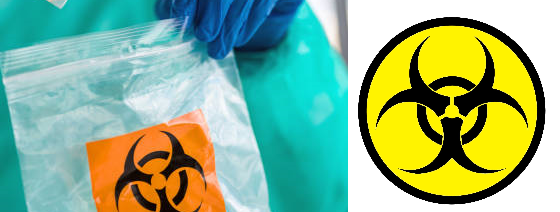Other categories of hazardous chemicals used as agents of chemical warfare according to the Center for Disease Control & Prevention (CDC) are as follows:
- Nerve agents: These are highly poisonous chemicals that work by preventing the nervous system from working properly.
- Biotoxins: These are poisons that come from plants or animals.
- Blister agents/vesicants—chemicals that severely blister the eyes, respiratory tract, and skin on contact.
- Blood agents: They are poisons that affect the body by being absorbed into the blood.
- Caustics (acids): These are chemicals that burn or corrode people’s skin, eyes, and mucus membranes (lining of the nose, mouth, throat, and lungs) on contact.
- Choking/lung/pulmonary agents: These are chemicals that cause severe irritation or swelling of the respiratory tract (lining of the nose and throat, lungs).
- Incapacitating agents: These are drugs that make people unable to think clearly or that cause an altered state of consciousness (possibly unconsciousness).
- Long-acting anticoagulants: These are poisons that prevent blood from clotting properly, which can lead to uncontrolled bleeding.
- Metals: These areagents that consist of metallic poisons.
- Organic solvents: These are agents that damage the tissues of living things by dissolving fats and oils.
- Riot control agents/tear gas: These agents are highly irritating agents normally used by law enforcement agents such as the police for crowd control or by individuals for protection (for example, mace).
- Toxic alcohols: These are poisonous alcohols that can damage the heart, kidneys, and nervous system
- Vomiting agents: These are chemicals that cause nausea and vomiting.
References
Aschengrau A and Seage G.R (2013). Essentials of Epidemiology in Public Health. Third edition. Jones and Bartleh Learning,
Aschengrau, A., & G. R. Seage III. (2009). Essentials of Epidemiology in Public Health. Boston: Jones and Bartlett Publishers.
Castillo-Salgado C (2010). Trends and directions of global public health surveillance. Epidemiol Rev, 32:93–109.
Centers for Disease Control and National Institutes of Health (1999). Biosafety in Microbiological and Biomedical Laboratories, 4th edn, Washington DC: CDC.
Guillemin J (2006). Scientists and the history of biological weapons. European Molecular Biology Organization (EMBO) Reports, Vol 7, Special Issue: S45-S49.
Halliday JE, Meredith AL, Knobel DL, Shaw DJ, Bronsvoort BMC, Cleaveland S (2007). A framework for evaluating animals as sentinels for infectious disease surveillance. J R Soc Interface, 4:973–984.
Nelson K.E and Williams C (2013). Infectious Disease Epidemiology: Theory and Practice. Third edition. Jones and Bartleh Learning.
Porta M (2008). A dictionary of epidemiology. 5th edition. New York: Oxford University Press.
Rothman K.J and Greenland S (1998). Modern epidemiology, 2nd edition. Philadelphia: Lippincott-Raven.
Rothman K.J, Greenland S and Lash T.L (2011). Modern Epidemiology. Third edition. Lippincott Williams and Wilkins, Philadelphia, PA, USA.
Discover more from #1 Microbiology Resource Hub
Subscribe to get the latest posts to your email.



